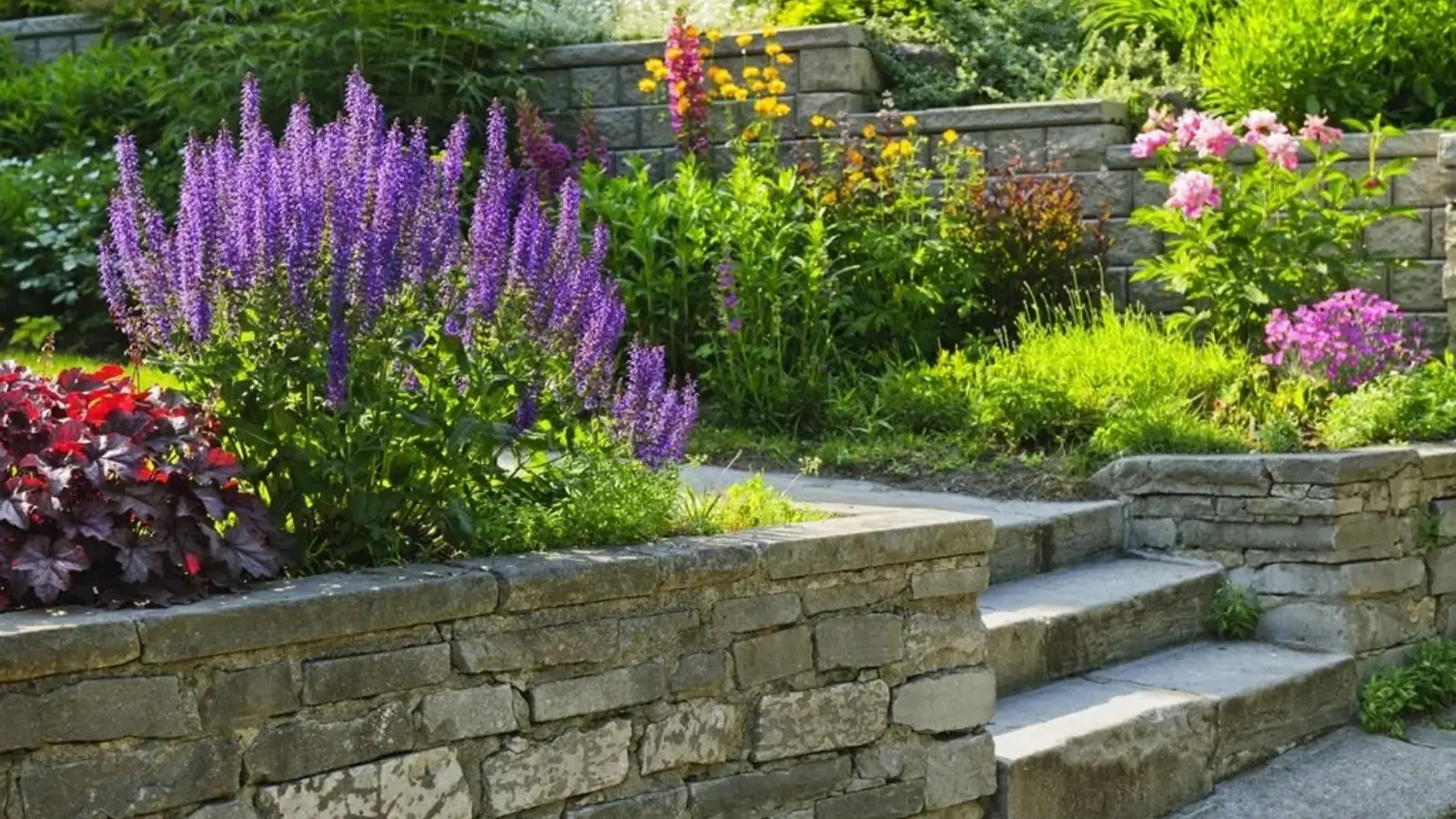


The most beautiful outdoor spaces often strike a balance between natural landscapes and thoughtfully designed features. But beneath every visually pleasing garden, patio, or walkway lies an essential consideration: stability. Without it, even the most well-crafted hardscape can quickly be compromised by erosion, runoff, or shifting ground.
Blending hardscape design with proper erosion control is key to creating durable and sustainable outdoor environments. Whether you're installing a new patio, managing shoreline erosion control, or planning hillside features, integrating aesthetic and functional elements can protect your investment and elevate your space.
From retaining walls to permeable pavers, here’s how homeowners and property managers can design stronger landscapes—with help from an experienced erosion control contractor or retaining wall contractor when necessary.
Hardscape refers to the non-living structural components of landscaping—elements like stone paths, patios, retaining walls, pavers, steps, and decorative rock beds. These features provide both visual appeal and practical benefits, such as defining space, directing foot traffic, and managing water flow.
When integrated properly, hardscapes can work in harmony with erosion control systems to stabilize slopes, prevent washout, and support plant life.
Erosion may not be visible at first glance, but its effects show up quickly—uneven soil, sunken pavers, cracked patios, or muddy pooling after a heavy rain. This occurs when water or wind gradually removes topsoil or shifts substrate layers beneath your hardscaping.
The biggest risks include:
Properties near lakes, streams, or rivers (requiring shoreline erosion control)
Sloped yards or hillsides with no existing support structures
High-traffic areas with compacted soil and poor drainage
Sites with loose or sandy soils that are easily displaced
Installing hardscaping without accounting for these conditions is like building a house without a foundation—it may look good, but it won’t last.
Effective landscape design isn’t just about appearance—it’s about how your yard performs over time. Here’s how to design hardscapes that resist erosion and function as part of a greater stability plan.
Retaining walls aren’t just barriers—they’re structural solutions. On sloped properties, they act as vertical support systems, stopping soil from sliding while creating flat, usable areas for gardens or patios.
A qualified retaining wall contractor will consider soil pressure, load distribution, and drainage in the design—making the wall a dual-purpose feature that offers both beauty and reinforcement.
Traditional pavers or concrete slabs can exacerbate erosion by creating runoff that flows over surfaces instead of soaking into the ground. Permeable pavers allow water to pass through gaps or porous materials, reducing surface runoff and filtering moisture back into the soil.
This reduces the velocity of water, helping prevent erosion near foundations, walkways, or garden beds.
Water is the number one driver of erosion, so landscape features must be designed to manage it wisely. Grading the land to slope gently away from structures, installing swales, or using French drains can protect both hardscape and softscape areas.
Integrating rock channels or dry creek beds not only controls runoff—they also add a naturalistic touch to the landscape.
Borders made of gravel or crushed stone around patios or retaining walls provide a buffer zone. These materials absorb and disperse rainwater, preventing it from collecting along edges where erosion is most likely to start.
This is especially useful in shoreline erosion control zones, where wave action and seasonal flooding cause frequent shifts in soil levels.
Native grasses, groundcovers, and shrubs have deep root systems that stabilize soil. When paired with hardscapes, they create a living framework that protects vulnerable areas from erosion.
Combining greenery with retaining walls or stepping stones also softens the look of structural features and adds a layer of ecological balance.
Waterfront homes and commercial properties face a specific threat: shoreline erosion control. This involves counteracting the force of waves, changing water levels, and flooding that gradually erode embankments.
Some strategies include:
Riprap: Using large stones to armor the shoreline
Living shorelines: Incorporating native plants and biodegradable materials
Retaining walls: Reinforced walls at the water’s edge to protect structures
Vegetative buffers: Planted strips that slow and filter runoff before it reaches the shore
Shoreline work often requires permits and specialized expertise. Working with an erosion control contractor who understands local regulations ensures your solution is both effective and compliant.
While many hardscape projects can begin with a DIY mindset, erosion issues are best handled with expert input. Signs that you may need a contractor include:
Repeated pooling or water damage after storms
Cracked or sinking patios and paths
Soil loss around structures
Waterlines appearing near walls or steps
Projects involving slopes, retaining structures, or waterfront
An erosion control contractor will evaluate your site’s grading, soil structure, water flow, and future risks—then suggest solutions that blend seamlessly with your design goals.
Companies like Mountain Stone understand how to align structural integrity with outdoor aesthetics, helping clients get both the look and the performance they want.
Incorporating erosion control into hardscape design also supports long-term environmental health. Preventing soil loss reduces sediment in waterways, protects native vegetation, and preserves natural land contours.
Homeowners and businesses that implement smart erosion strategies enjoy not only lower maintenance but also a more resilient and eco-friendly landscape.
Creating a stunning outdoor space is about more than surface-level appeal. Behind every successful landscape is a solid foundation—one that accounts for water, soil, and time. By combining well-designed hardscapes with erosion prevention strategies, you ensure your property stays as strong as it is beautiful.
Whether you're building from scratch or enhancing an existing yard, don’t underestimate the value of thoughtful integration. From retaining walls to shoreline erosion control, each feature should play a role in the long-term health of your land.
With the right planning—and support from professionals like Mountain Stone—you can design a space that thrives season after season, year after year.